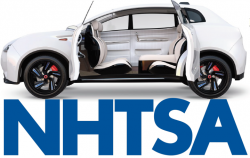
— The U.S. Department of Transportation (DOT) has announced voluntary guidelines for states and driverless car companies to follow, just days after the U.S. House of Representatives passed a bill to make it easier for self-driving cars to get on the roads.
DOT Secretary Elaine Chao announced the guidelines called "Automated Driving Systems: A Vision for Safety" that consumer advocates say will make everyone on the roads nothing more than lab rats.
Based on wording from the DOT and members of Congress, there are worries the U.S. won't be viewed as the leader in autonomous vehicles if too many rules and regulations prevent those technologies from the roads.
Previous guidelines created a 15-point checklist automakers were asked to voluntarily follow with self-driving cars, but the new guidelines don't include the checklist.
Instead of safety regulators taking the lead on driverless car safety, the DOT says the voluntary guidelines were put together using "public comments,” and all without any public hearings since Trump took office.
As for the rights of states, each state is warned about taking anything from the federal voluntary guidelines and trying to make those guidelines into law. In addition, the feds make it clear that every state should play along and not do anything to slow down the testing and deployment of self-driving cars.
NHTSA wants the states to "review traffic laws and regulations that may serve as barriers" to the operation of driverless cars, and remove any "unnecessary regulatory barriers that would prevent the testing and deployment" of those cars on public roads.
As an example, some states require a human driver to keep one hand on the wheel at all times, a law that should be erased because it could "pose a barrier" to level 3 through level 5 cars.
The DOT uses a "level" system to describe how much driverless cars will depend on technology compared to human drivers.
Level 1 - The vehicle is controlled by the driver, but some driving assist features may be included in the vehicle.
Level 2 - The vehicle has combined automated functions, like acceleration and steering, but the driver must remain engaged with the act of driving and monitor the environment at all times.
Level 3 - A driver is a necessity, but is not required to monitor the environment. However, the driver must be ready to take control of the vehicle at all times with required warnings.
Level 4 - The vehicle is capable of performing all driving functions under certain conditions, and the driver may have the option to control the vehicle.
Level 5 - This is the highest level where the vehicle is capable of performing all driving functions under all conditions, but the driver may have the option to control the vehicle.
Automakers are also encouraged to provide information about how their vehicles are performing concerning safety, but monitoring the safety aspects are left to the very companies creating and testing the technology. In addition, even those suggestions are voluntary, with nothing mandated by the government.
Auto safety advocates were already complaining days ago when the U.S. House passed a bill called the SELF-DRIVE Act that one safety organization says is a threat to highway safety.
Consumer Watchdog had harsh words for the new voluntary guidelines when it said the "Vision for Safety" is anything but, and does nothing but create a "roadmap that allows manufacturers to do whatever they want, wherever and whenever they want, turning our roads into private laboratories for robot cars with no regard for our safety.”
The consumer organization also pointed out the voluntary guidelines focus on levels 3 through 5 vehicles, leaving level 2 cars out in the cold.
“This a serious short-coming and ignores the fact that Level 2 technology, like Tesla’s Autopilot, has killed people. How the human driver monitors and interacts with Level 2 technologies is potentially life threatening and requires Federal Motor Vehicle Safety Standards.” - Consumer Watchdog
In addition to auto safety advocates, some in Congress say the voluntary guidelines are a step backward, namely Energy and Commerce Committee Ranking Member Frank Pallone, Jr. (D-NJ) and Digital Commerce and Consumer Protection Subcommittee Ranking Member Jan Schakowsky (D-IL).
"Instead of focusing on safety and ensuring car makers are properly testing these vehicles, the Administration chose to cave to industry and pressure states into not acting." - Pallone and Schakowsky
This latest version is called 2.0, and NHTSA says it is already working on version 3.0, something that could further erase the responsibilities of regulators to ensure the cars are safe before they hit the roads, not after.
The announcement arrived the same day the National Transportation Safety Board (NTSB) released its conclusions about a fatal crash of a Tesla Model S that crashed when "Autopilot" was engaged. The NTSB determined the automated technology of the car left a lot to be desired and along with the drivers involved, partially contributed to the crash.




